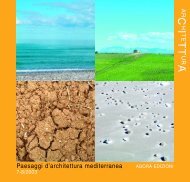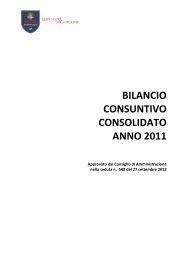Historical Perspective of the Heck Reaction
Historical Perspective of the Heck Reaction
Historical Perspective of the Heck Reaction
You also want an ePaper? Increase the reach of your titles
YUMPU automatically turns print PDFs into web optimized ePapers that Google loves.
3.3 Palladium nanoparticles as catalysts for <strong>Heck</strong> reaction<br />
A palladium-nanoparticle-cored G-3 dendrimer, characterized by TEM, TGA,<br />
absorption, and IR spectroscopies, has approximately 300 Pd atoms in <strong>the</strong> metallic core<br />
and an average diameter <strong>of</strong> 2.0 nm, to which are attached fourteen G-3 dendrons.<br />
Nearly 90% <strong>of</strong> <strong>the</strong> metal nanoparticle surface is unpassivated and available for<br />
catalysis. The dendrons inhibit metal agglomeration without adversely affecting<br />
chemical reactivity. Thus, investigations have shown that Pd-G-3 can efficiently<br />
catalyze <strong>Heck</strong> and Suzuki reactions [8]<br />
Syn<strong>the</strong>sis <strong>of</strong> Pd-G-3, in Which Seven <strong>of</strong> <strong>the</strong> Fourteen G-3 Wedges Are Shown (see<br />
text)<br />
Pd-G-3 was prepared by <strong>the</strong> Brust reaction<br />
(K2PdCl4 was phase transferred into toluene using<br />
tetraoctylammonium bromide (TOAB). Fre´chettype<br />
dendritic polyaryl e<strong>the</strong>r disulfide3 <strong>of</strong><br />
generation 3 (G-3S) was <strong>the</strong>n used. The mixture<br />
was cooled in ice (0-2 °C) and excess <strong>of</strong> NaBH4<br />
was added. The Pd-G-3 thus obtained was a black<br />
powder, freely soluble in methylene chloride,<br />
chlor<strong>of</strong>orm, toluene and THF, but insoluble in<br />
e<strong>the</strong>r and alcohol. Pd-G-3 was stable for several<br />
months both as a powder and as a dilute solution<br />
in CH2Cl2. FT-IR and TGA experiments showed<br />
that Pd-G-3 incorporated some amount <strong>of</strong> TOAB<br />
and this could not be removed by <strong>the</strong> standard<br />
purification procedure. Figure 5 shows a highresolution<br />
TEM image <strong>of</strong> Pd-G-3 and <strong>the</strong><br />
corresponding core-size histogram. It can be seen<br />
from Figure 1 that <strong>the</strong> particles exhibit a relatively<br />
wide size distribution (1-5 nm). The mean core<br />
diameter obtained from <strong>the</strong> histogram plot was 2.0<br />
nm<br />
TEM image and core-size histogram <strong>of</strong><br />
Pd-G-3.<br />
15








